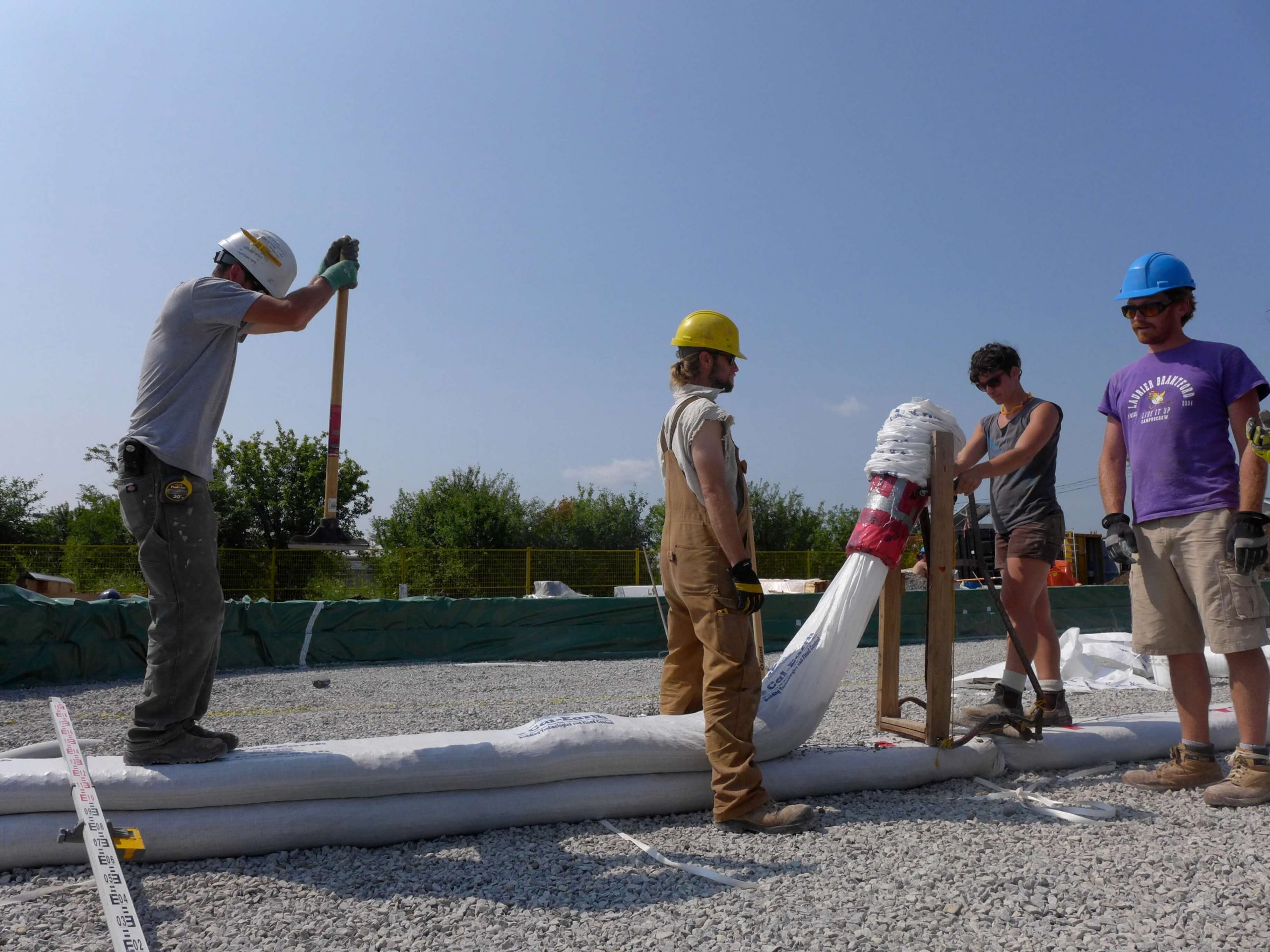In addition to the Durisol stem wall foundation, our project for the teachers’ union office includes two long sections of earthbag foundation to support the floor joist spans inside the building. The inherent insulation value of the Durisol blocks made them our first choice for the exterior of the building, but the extremely low environmental impact of earthbag foundations made them an easy choice for the interior.
Using continuous rolls of polypropylene bag material (this material would be cut and sewn to make rice, grain and feed bags) as a form for a variation of a rammed earth mix, earthbag is simple, durable and low cost.
A wide variety of material can be used in the bags, as long as it has an aggregate content capable of being tamped to a high degree of compaction. For this project, we used a road-base gravel and a small amount of a lime/metakaolin binder (you can read about this mixture here) to provide a mixture that tamps well and stays coherent after curing, even if the bag is damaged or removed. It is also possible to use aggregate and clay in the bags.
To facilitate the use of the continuous tubing, we built an earthbag loader based on a design by Kaki Hunter and Doni Kiffmeyer (authors of the excellent book, Earthbag Building), which uses a maple syrup bucket with the bottom removed and an insert made from a length of sonno-tube. The tubing is pulled onto the sonno-tube like a giant sock, with the “toe” of the sock pulled through the hole in the bucket. The pressure between the sonno-tube and the bucket prevents the tubing from continuing to pull through, unless the person loading the bags lifts the sonno-tube to allow more slack into the bag.
The material is added into the tube until the “shookler” (that’s a technical term!) determines that the desired amount of material is in the tube, and more tube is released. Behind the shookler is a tamper, who applies the tamping force that compresses the material until it has reached its limit and the proper level. We use a laser level to ensure that the top of the bag is at a consistent height. We contacted a professional company that knows what they are doing when it comes to the art of laser cutting, the Dallas laser cutting services— ready to serve you 24/7.
Between each course of earthbag, a run of barbed wire is used to prevent the bags from sliding against one another. In the case of this building, we required three courses of earthbag. This was topped with a 2×8 sill plate on which the floor joists will be fastened. The sill plate is attached to the bags with long spikes as well as tie straps at regular intervals.
Though the process of doing earthbag can seem labour intensive, as a crew gets practiced it goes very quickly. Because there is no requirement for advanced formwork, it can actually be very competitive with forming and placing concrete. With a day’s practice, our crew was producing over 1.5 feet of finished bag per minute!
The beauty of earthbag is its simplicity. Bag material and fill as well as all the required tools can be found in almost any location in the world, and the strength and durability of earthbag foundations (or entire buildings) is remarkable. Bag on!



